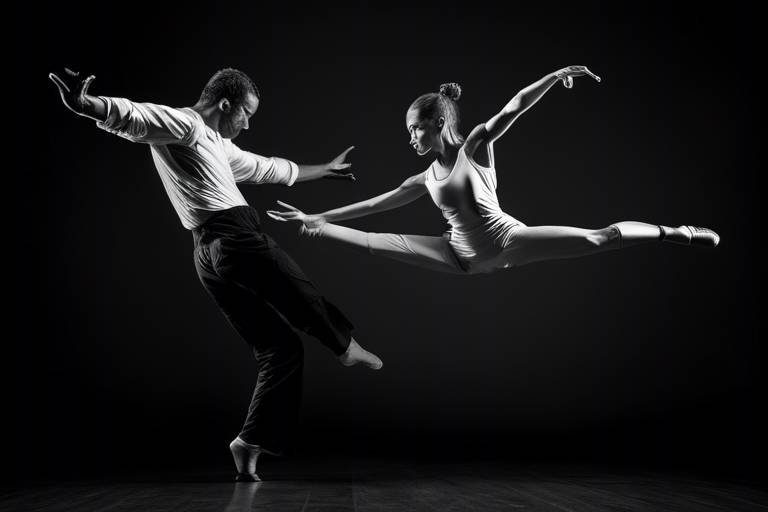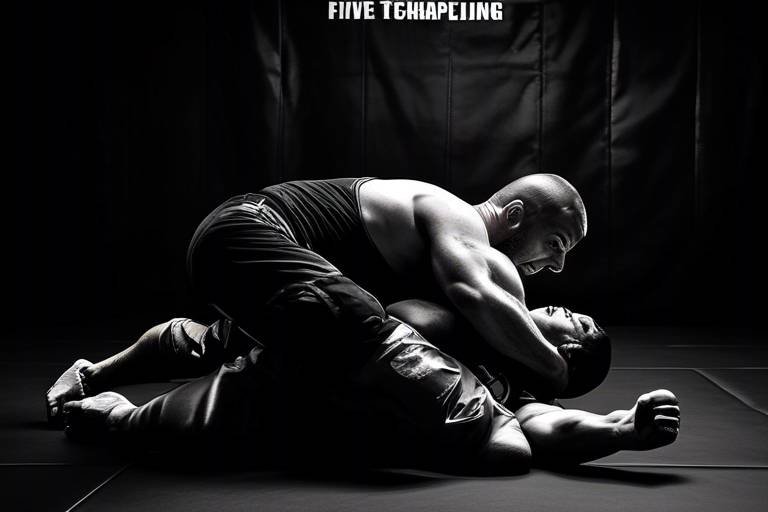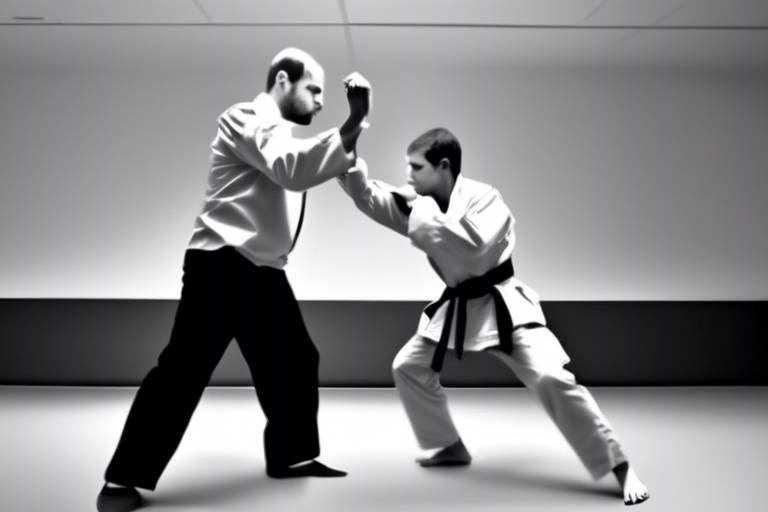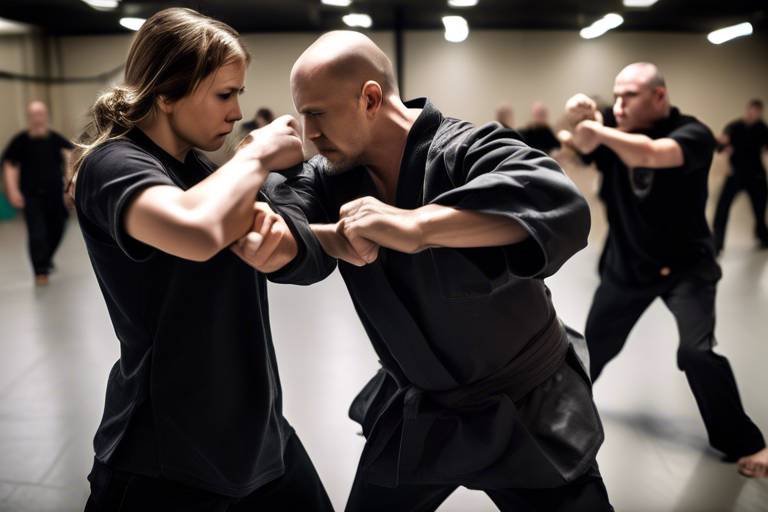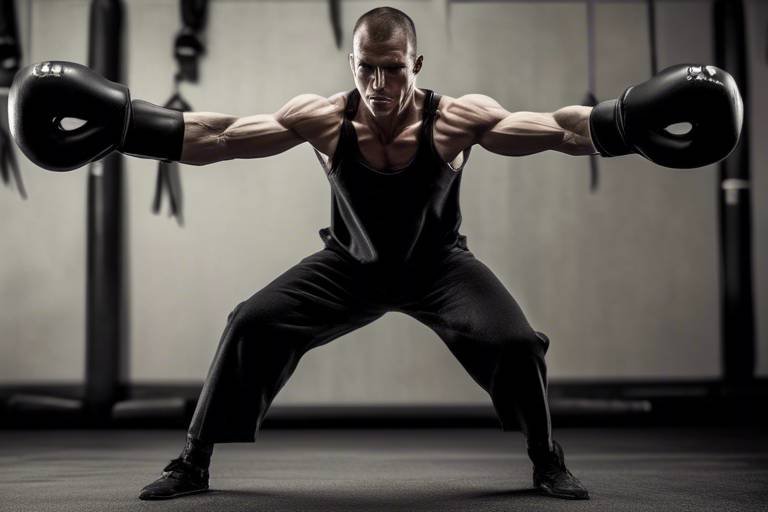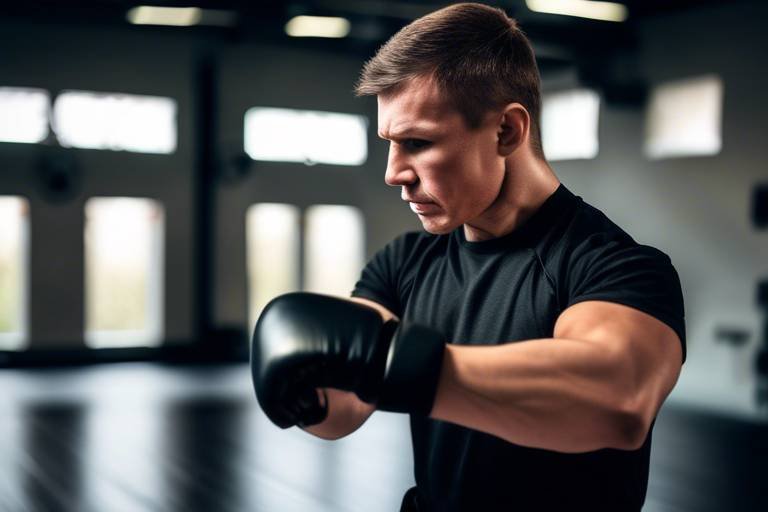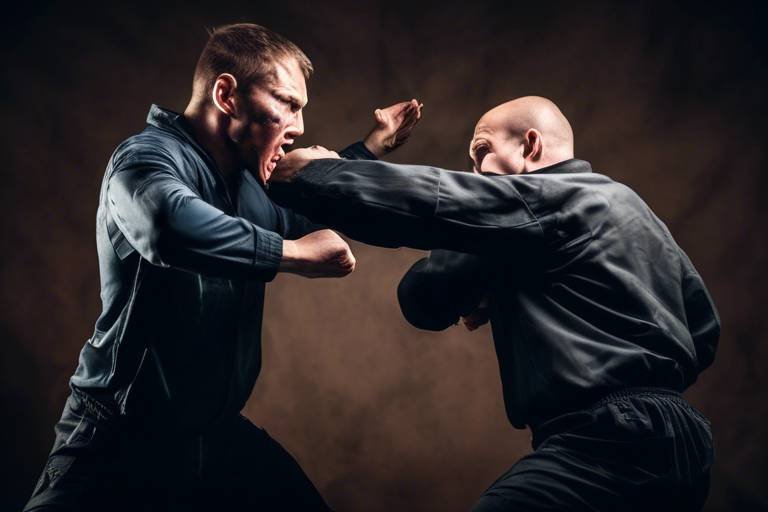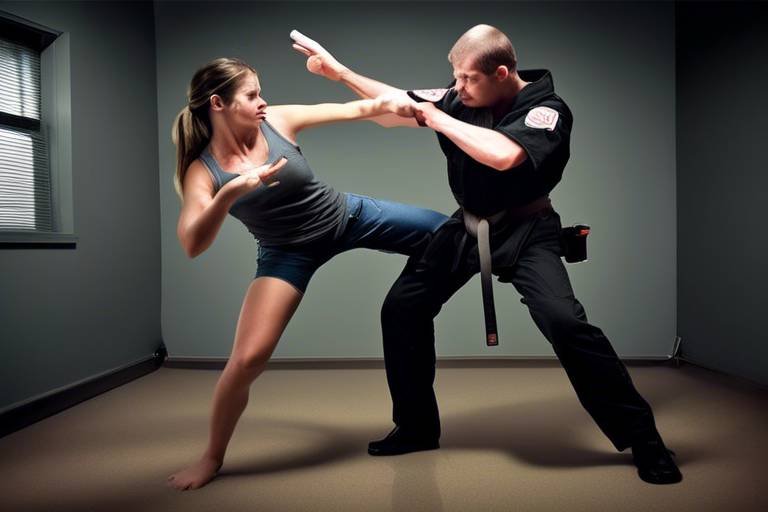Exploring the Intersection of Dance and Self-Defense Techniques
Have you ever considered that the graceful movements of dance could actually enhance your self-defense skills? It might sound surprising, but there’s a fascinating connection between these two seemingly different disciplines. Both dance and self-defense are rooted in the art of movement, embodying principles that can significantly boost not just your physical fitness, but also your personal safety. Imagine the fluidity of a dancer's body, seamlessly transitioning from one pose to another, and how that same fluidity can be channeled into effective self-defense maneuvers. In this article, we will explore how the rhythm, timing, coordination, and emotional expression found in dance can be powerful tools in self-defense situations.
At the heart of both dance and self-defense lies a deep understanding of movement. When you think about it, every dance performance tells a story through the body, using space and motion to convey emotions. Similarly, self-defense techniques rely on precise body mechanics to execute effective responses to threats. This connection is not merely coincidental; it’s about mastering the art of movement. By honing your skills in dance, you can develop a heightened sense of body awareness that translates directly to self-defense. For instance, a dancer learns to control their body in space, which can help in dodging an attack or repositioning oneself during a confrontation. The principles of balance, posture, and alignment are crucial in both fields, serving as the foundation for effective and graceful movement.
Rhythm and timing are the lifeblood of dance, and they play an equally critical role in self-defense. In dance, the ability to move in sync with music allows performers to create a captivating experience. In self-defense, however, rhythm translates to the ability to anticipate an opponent's moves and react accordingly. Have you ever noticed how a dancer seems to know exactly when to leap or spin? This instinctual timing can be developed through practice and is essential in self-defense scenarios where every second counts. By training in dance, you can enhance your ability to read situations and respond with agility, making you more adept at handling unexpected confrontations.
Coordination and balance are vital components in both dance and self-defense. Think about how a dancer balances on one leg while executing a complex turn; this kind of stability is equally important when you’re trying to maintain your ground during a self-defense situation. Exercises that focus on improving these skills can be incredibly beneficial. For example, practicing pirouettes not only enhances your ability to control your body but also improves your spatial awareness, which is crucial when trying to evade an attack. Incorporating drills that develop coordination, such as shadow fighting or partner drills, can help you become more agile and responsive. The more you practice, the more natural these movements will feel, allowing you to react instinctively in high-pressure situations.
Effective footwork is the cornerstone of both dance and self-defense. In dance, intricate footwork can create stunning visual effects, while in self-defense, it can mean the difference between safety and vulnerability. Techniques such as the cha-cha step or the quick shuffle can be adapted to help you maneuver away from potential threats. For instance, learning to pivot quickly can help you evade an attack and reposition yourself for a counter-move. The table below highlights some dance footwork techniques and their self-defense applications:
| Dance Technique | Self-Defense Application |
|---|---|
| Cha-Cha Step | Quick lateral movement to evade attacks |
| Jazz Square | Repositioning for better angles during a confrontation |
| Fouetté Turn | Rapid pivoting to avoid a strike |
One of the most significant benefits of dance training is the development of body awareness. This heightened state of awareness allows dancers to control their movements with precision, which is equally beneficial in self-defense. When you’re aware of your body’s capabilities and limitations, you can react more effectively to threats. This awareness can be cultivated through practices such as yoga or Pilates, which emphasize the connection between mind and body. As you become more attuned to your physical self, you’ll find that your responses in self-defense situations become more instinctual and fluid, much like the movements of a dancer on stage.
Dance is not just about physical movement; it's also a powerful form of emotional expression. Similarly, self-defense requires a level of emotional awareness. Understanding your emotions can empower you in both practices. For instance, channeling your emotions through dance can help you release stress and build confidence, which are essential qualities in self-defense. When you feel empowered and confident, you’re more likely to stand your ground and respond effectively in the face of danger. Connecting with your emotions allows you to harness that energy, turning it into strength during self-defense situations.
So, how can we practically apply these dance techniques to self-defense training? The answer lies in integrating movements from dance into your self-defense practice. For example, incorporating dance-like footwork into your training regimen can enhance your agility and speed. Additionally, using dance movements to practice strikes and blocks can make your training more dynamic and engaging. The key is to approach your training with an open mind, allowing the fluidity of dance to inform your self-defense techniques.
Combining dance and self-defense in your training regimen can yield unique benefits. Imagine attending a class that not only teaches you how to defend yourself but also allows you to express yourself through movement. This fusion can lead to comprehensive skill development, making your training more enjoyable and effective. Consider joining classes that offer both dance and self-defense elements, or even creating your own routine that incorporates techniques from both disciplines. The possibilities are endless!
Finally, joining communities that focus on both dance and self-defense can foster support and enhance your learning experience. Being part of a group where you can share your progress, challenges, and victories makes the journey much more enjoyable. Whether it’s through local classes, online forums, or social media groups, connecting with like-minded individuals can boost your confidence and encourage you to push your limits.
- Can dance really improve my self-defense skills? Yes! Dance enhances body awareness, coordination, and timing, all of which are essential in self-defense.
- Do I need to be a dancer to benefit from this? No, anyone can benefit from integrating dance principles into their self-defense training.
- What type of dance is best for self-defense? Any dance style that emphasizes rhythm, coordination, and body awareness can be beneficial.
- How can I find classes that combine dance and self-defense? Look for local studios that offer mixed classes or search for workshops that focus on both disciplines.
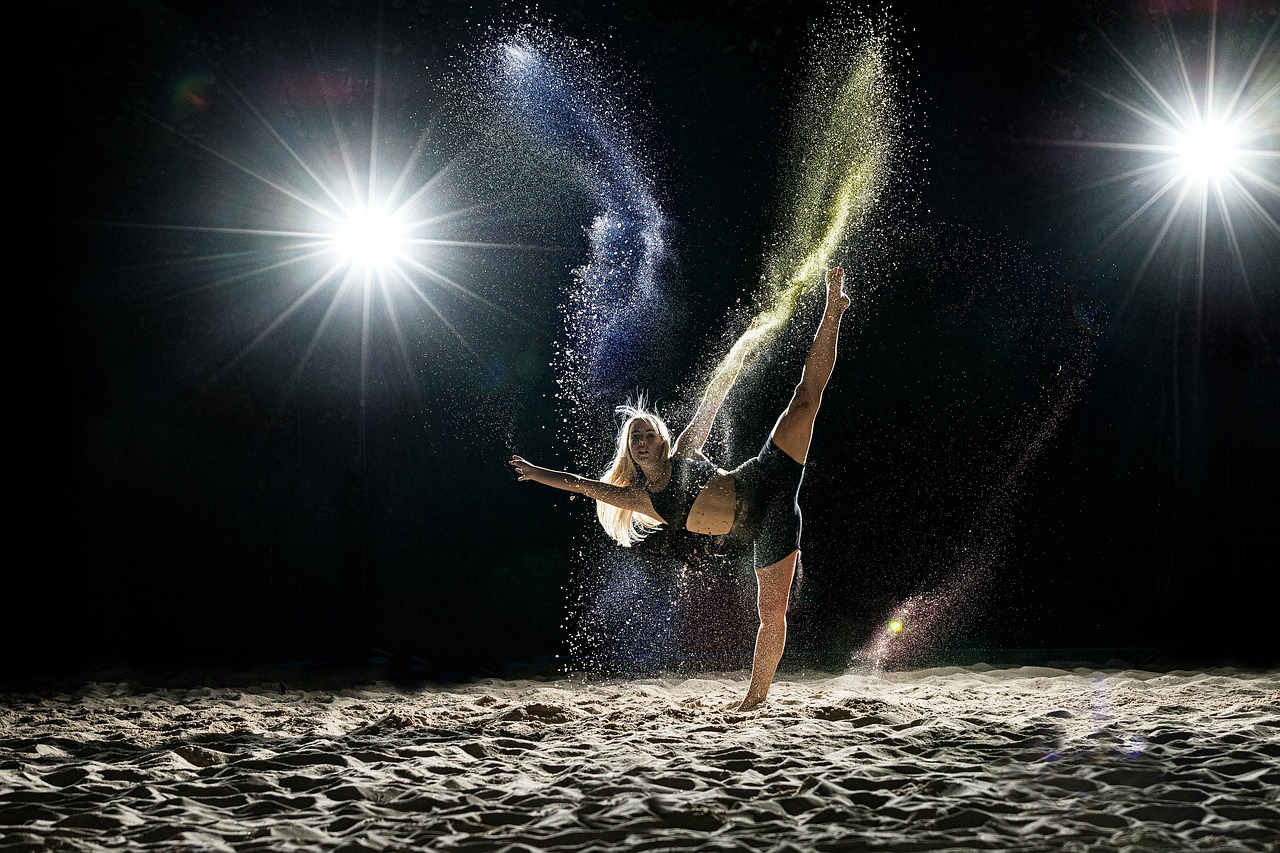
The Art of Movement
When we think about movement, we often picture graceful dancers gliding across a stage or a martial artist executing a flawless kick. But have you ever considered how these two seemingly different worlds are intertwined? At the heart of both dance and self-defense lies a profound understanding of body mechanics. This understanding is not just about moving from point A to point B; it’s about how we utilize our bodies to express ourselves, defend ourselves, and connect with our environment.
In dance, movement is an art form that tells a story, evokes emotions, and captivates audiences. Each step, turn, and leap is meticulously crafted to create a visual masterpiece. Similarly, self-defense techniques are rooted in movement that is both practical and effective. The way we position ourselves, shift our weight, and respond to an opponent’s actions can mean the difference between safety and vulnerability. Just like a dancer must be aware of their body’s alignment and flow, a self-defense practitioner must understand how to move efficiently to protect themselves.
Consider the following aspects of movement that are essential in both disciplines:
- Body Alignment: Proper alignment ensures that our movements are efficient and powerful, whether we are performing a pirouette or executing a defensive maneuver.
- Weight Transfer: The ability to shift weight smoothly is crucial in both dance and self-defense. In dance, it allows for fluid transitions, while in self-defense, it helps in maintaining balance and stability.
- Spatial Awareness: Dancers are constantly aware of their surroundings—how much space they have, where their fellow dancers are, and how to navigate the stage. This same awareness is vital in self-defense, where understanding distance can help anticipate an attacker’s movements.
By honing these elements of movement, practitioners can enhance their skills in both dance and self-defense. Engaging in activities that promote flexibility, strength, and coordination will not only improve your performance on stage but also increase your effectiveness in self-defense scenarios. Imagine dancing through life—confident, fluid, and ready to respond to any situation that might arise.
As we explore further, we’ll uncover how rhythm and timing play a pivotal role in both dance and self-defense, and how mastering these elements can transform your approach to movement altogether.
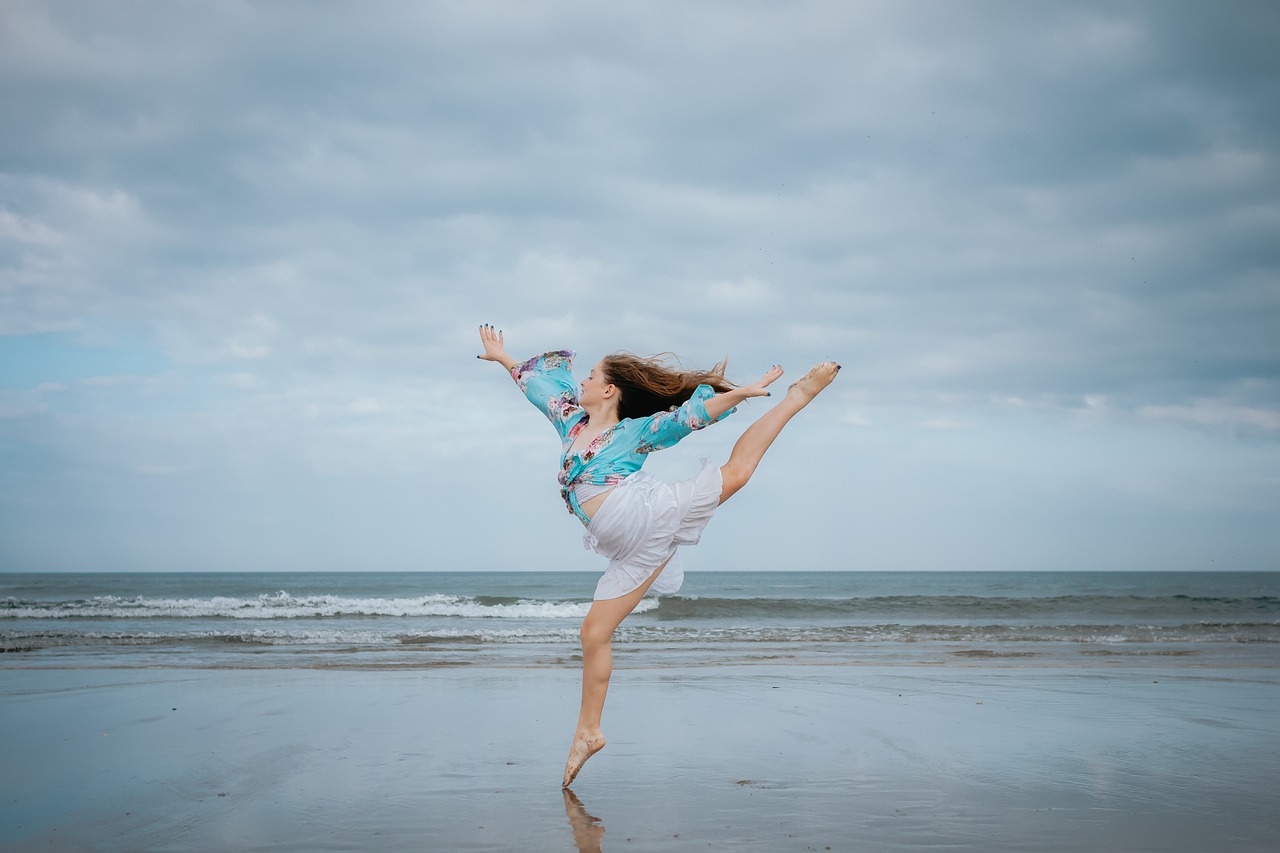
Rhythm and Timing
When we think about dance, we often imagine the graceful flow of movements, the beat of the music, and the beauty of expression. But what if I told you that the same principles of rhythm and timing that make a dance performance captivating can also be applied to self-defense? Just as a dancer must feel the music to move fluidly, a self-defense practitioner must be attuned to their environment and the actions of their opponent. This connection between dance and self-defense is not just a coincidence; it’s a powerful intersection that can enhance both disciplines.
In dance, rhythm is the heartbeat of the performance. It dictates how movements are executed, when to leap, and when to hold still. Similarly, in self-defense, timing is everything. Understanding when to react, when to strike, or when to evade can mean the difference between safety and vulnerability. Imagine a dancer who can anticipate the beat of the music, moving effortlessly in sync. This ability to anticipate is equally crucial in self-defense, where the ability to read an opponent's intentions can provide a significant advantage.
Consider the following aspects of rhythm and timing that are essential in both dance and self-defense:
- Anticipation: Just like a dancer anticipates the next beat, a self-defense practitioner must learn to anticipate the moves of an attacker. This skill can be developed through practice and awareness.
- Reaction Time: In dance, quick footwork and swift movements are vital. In self-defense, the ability to react swiftly to an unexpected situation can save you from harm.
- Flow of Movement: Dance emphasizes smooth transitions between movements, while self-defense requires fluidity in shifting from offense to defense. Mastering this flow can enhance effectiveness in both fields.
Moreover, the concept of muscle memory plays a significant role in both dance and self-defense. Dancers train their bodies to respond instinctively to music, while self-defense practitioners train to react automatically to threats. This muscle memory is developed through repetitive practice, allowing for more natural and fluid movements under pressure.
To illustrate the importance of rhythm and timing, let’s look at a simple comparison:
| Aspect | Dance | Self-Defense |
|---|---|---|
| Rhythm | Essential for fluid movement | Critical for timing reactions |
| Anticipation | Predicts the next move | Foresees an attack |
| Flow | Smooth transitions | Seamless shifts between techniques |
By understanding and practicing these elements, individuals can significantly improve their skills in both dance and self-defense. It’s about creating a rhythm in your body that allows you to move with confidence and purpose. So, the next time you’re in a self-defense class, think about the rhythm of your movements and how timing can play a crucial role in your safety.
- Can dance really help with self-defense? Absolutely! The principles of rhythm, timing, and body awareness in dance can enhance your self-defense skills.
- What specific dance techniques are useful in self-defense? Techniques that emphasize footwork, balance, and fluid movement can be adapted for effective self-defense strategies.
- How can I improve my timing for self-defense? Regular practice, awareness drills, and engaging in dance can all help improve your timing in self-defense situations.
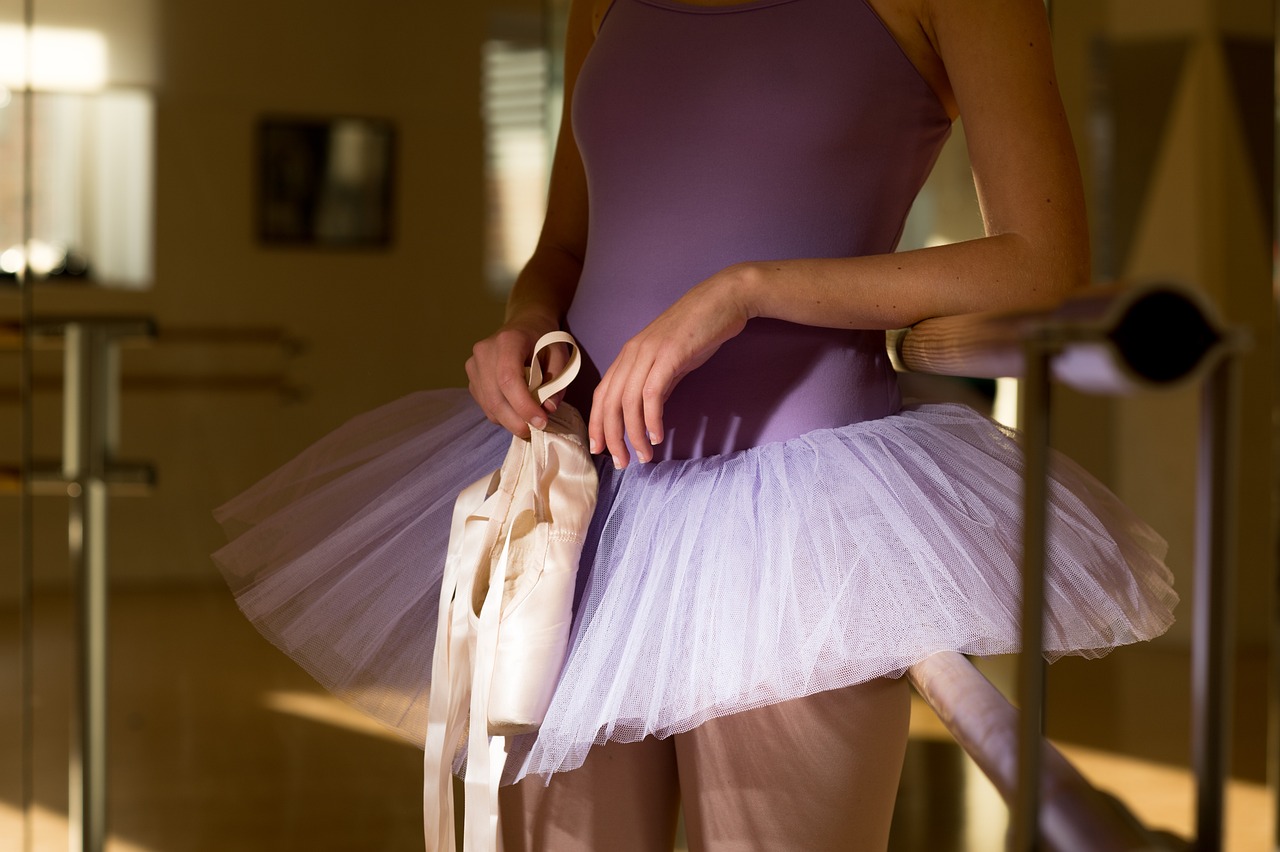
Coordination and Balance
When we think about dance and self-defense, two seemingly distinct disciplines, the importance of coordination and balance becomes strikingly evident. Both require a keen sense of body control and an understanding of how to move effectively in space. Imagine a dancer gliding across the floor, every movement fluid and intentional, as if they were part of a larger symphony. Now picture a self-defense practitioner, poised and ready, moving with precision to evade an attack. Both scenarios highlight the necessity of mastering these fundamental skills.
To enhance coordination and balance, practitioners can engage in a variety of exercises that not only improve their performance in dance but also bolster their self-defense capabilities. For instance, activities like yoga and Pilates are fantastic for developing core strength, which is essential for maintaining balance. Additionally, practicing dance routines can help individuals become more aware of their body movements, allowing them to react swiftly and effectively in self-defense situations.
Here are some exercises that serve both dancers and self-defense enthusiasts:
- Balance Exercises: Incorporating single-leg stands or balance board activities can significantly improve stability.
- Coordination Drills: Activities like skipping, hopping, or even dance routines that require intricate footwork can enhance coordination.
- Agility Training: Ladder drills or cone drills can help in developing quick foot movements, essential for both dance and self-defense.
Moreover, it's essential to recognize that coordination and balance aren't just about physical prowess; they also involve mental focus. When a dancer is in tune with the rhythm and flow of the music, their body responds in harmony. Similarly, in a self-defense scenario, being mentally present can make all the difference in how one responds to an unexpected situation. This mental engagement, combined with physical training, creates a holistic approach to mastering both disciplines.
In summary, improving coordination and balance through dedicated practice not only enhances performance in dance but also equips individuals with the skills necessary to navigate the unpredictable nature of self-defense. As practitioners continue to refine these abilities, they will find themselves more confident and capable, whether they are performing on stage or defending themselves in real life.
- How can I improve my coordination for dance and self-defense? Regular practice of balance exercises, agility drills, and dance routines can significantly enhance your coordination.
- Is it necessary to have prior dance experience to benefit from dance in self-defense? No, even beginners can benefit from the principles of movement and body awareness that dance offers.
- Can self-defense techniques be incorporated into dance routines? Absolutely! Many movements in dance can be adapted for self-defense, creating a unique blend of artistry and practicality.
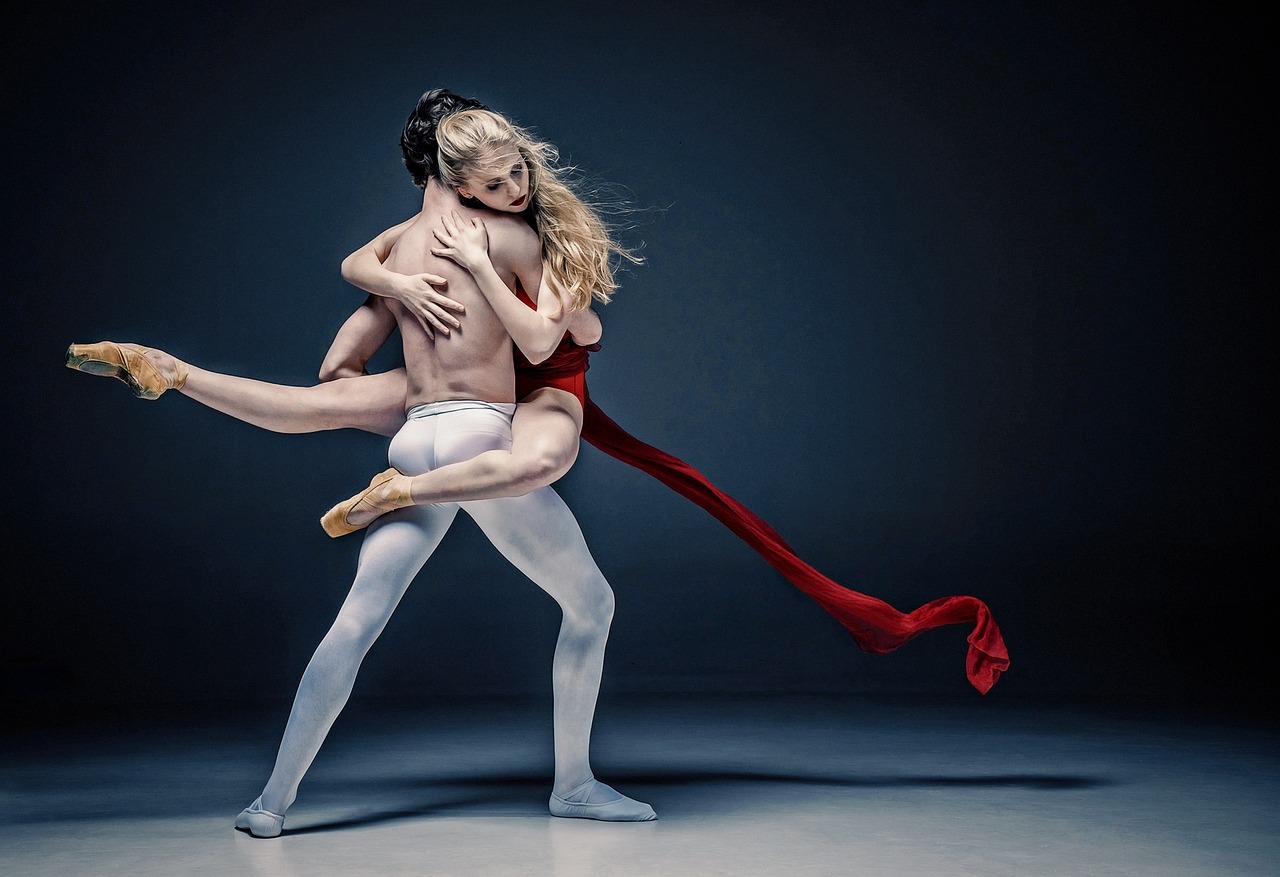
Footwork Fundamentals
When it comes to both dance and self-defense, footwork is the unsung hero. Think of it as the foundation of a house; without a solid base, everything else can crumble. In dance, your footwork dictates your rhythm, flow, and ability to perform intricate moves with grace. Similarly, in self-defense, effective footwork can mean the difference between evading a threat and being caught off guard. It's all about positioning, balance, and the ability to move fluidly in any direction.
One fundamental aspect of footwork in both disciplines is the concept of weight transfer. In dance, you learn to shift your weight smoothly from one foot to another, allowing for seamless transitions between movements. This same principle applies in self-defense, where shifting your weight can help you evade an attack, throw off an assailant, or even reposition yourself for a counterattack. Practicing weight transfer can enhance your agility, making you quicker and more responsive.
Another critical element is stance. In dance, a strong stance allows for better control and execution of movements. In self-defense, having a stable stance not only prepares you for an attack but also enables you to deliver powerful strikes. Both disciplines emphasize the importance of a strong base, and practicing various stances can significantly improve your overall performance. For instance, the following table illustrates common stances used in dance and their corresponding applications in self-defense:
| Dance Stance | Self-Defense Application |
|---|---|
| First Position | Basic defensive stance for balance |
| Plie | Lowering your center of gravity for stability |
| Jazz Square | Quick lateral movement to evade an attack |
| Turnout | Creating space and angles for effective strikes |
Incorporating dance footwork into self-defense training can be incredibly beneficial. For example, the side shuffle is a common move in both disciplines. In dance, it helps you glide across the floor, while in self-defense, it allows you to quickly move out of the line of attack. Practicing this movement can enhance your lateral agility, enabling you to dodge attacks while maintaining your balance.
Moreover, practicing footwork drills can elevate your skills in both areas. Simple exercises like shadow dancing or practicing footwork patterns can sharpen your reflexes and improve your spatial awareness. As you become more proficient, you’ll find that your body instinctively knows how to respond in both dance performances and self-defense situations. So, whether you're pirouetting across a stage or sidestepping a potential threat, remember that your feet are your most powerful allies.
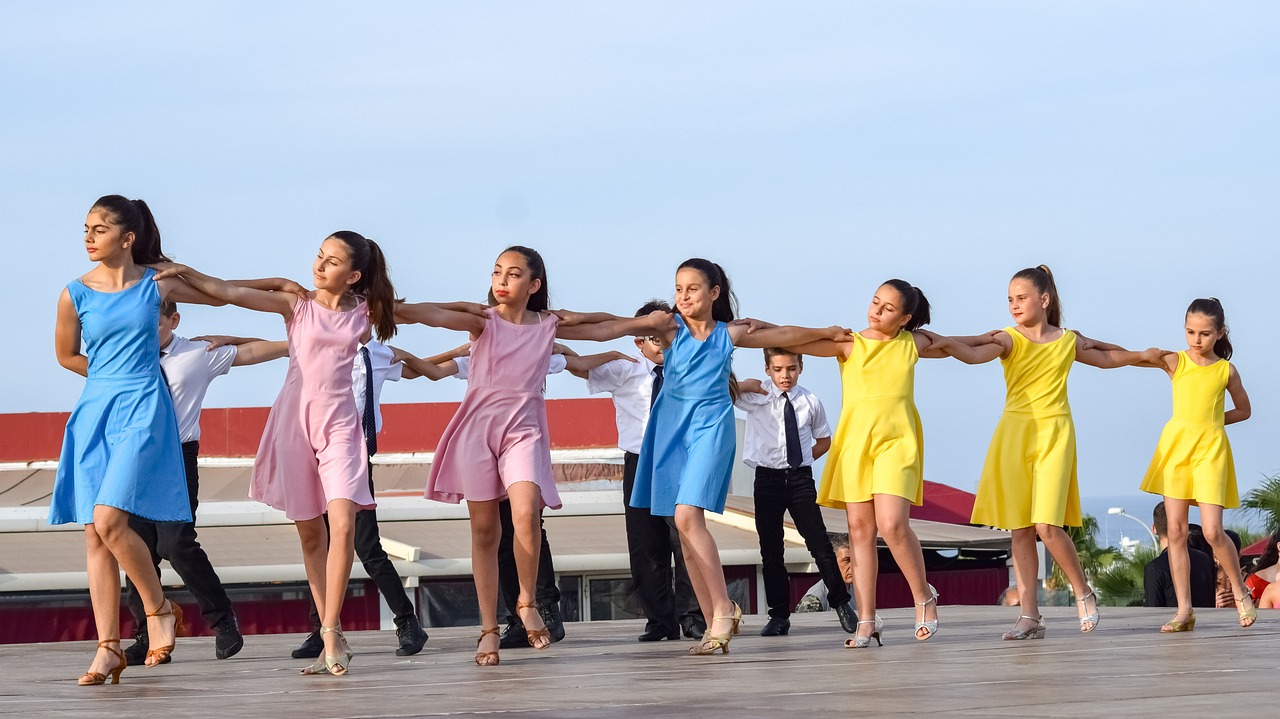
Body Awareness
is a vital component in both dance and self-defense, acting as the bridge that connects physical movements with mental understanding. When you think about it, our bodies are like intricate machines, and just as a well-oiled engine needs to know its parts to function effectively, we too must become intimately familiar with our own bodies. This awareness allows dancers to execute fluid movements and enables self-defense practitioners to respond swiftly and effectively in high-pressure situations.
In dance, body awareness involves understanding how each part of your body contributes to your overall performance. It’s about recognizing your balance, posture, and the alignment of your limbs. For instance, when a dancer performs a pirouette, they must be acutely aware of their center of gravity to maintain balance and control. Similarly, in self-defense, being aware of your body helps you to position yourself advantageously, making it easier to evade attacks or counteract an aggressor’s movements.
Imagine you’re a dancer on stage, every muscle in your body working in harmony to create a stunning visual experience. Now, switch to a self-defense scenario where that same awareness can mean the difference between safety and danger. By honing your body awareness through dance, you become more in tune with your physical capabilities and limitations, leading to improved responsiveness in self-defense situations.
To cultivate body awareness, practitioners can engage in various exercises that promote mindfulness and focus on bodily sensations. Here are a few effective methods to enhance body awareness:
- Mindful Movement: Engage in slow, deliberate movements, paying attention to how your body feels with each action.
- Yoga or Pilates: These practices enhance flexibility and strength while fostering a deeper connection to your body.
- Mirror Work: Use mirrors to observe your movements, which can help identify areas of tension or imbalance.
Furthermore, incorporating body awareness into your training can lead to increased confidence. When you understand how your body moves and reacts, you become more assured in your abilities, whether on the dance floor or in a self-defense scenario. This confidence is not just about physical prowess; it’s also about mental clarity and the ability to stay composed under pressure.
In conclusion, developing body awareness is essential for anyone looking to excel in dance or self-defense. By fostering a deeper understanding of our bodies, we enhance our ability to perform gracefully in dance and respond effectively in self-defense situations. So, whether you’re twirling on stage or preparing to defend yourself, remember that your body is your greatest ally—treat it with the respect and awareness it deserves.

Emotional Expression
When we think about dance, we often envision the fluid movements, the rhythm, and the joy it brings. But there's a deeper layer to dance that transcends mere physicality: it’s a powerful form of . Just like a painter uses colors to convey feelings, dancers use their bodies to express a wide range of emotions, from joy to sorrow, anger to serenity. This ability to connect with emotions is not only vital in dance but can also play a significant role in self-defense. Imagine being in a high-pressure situation where your emotions are running wild; the ability to channel those feelings can be your greatest ally.
In both dance and self-defense, emotional awareness can lead to heightened intensity and focus. For dancers, expressing emotions through movement can create a captivating performance that resonates with the audience. Similarly, in self-defense, being attuned to your emotions can help you respond more effectively to a threat. When you feel fear or anxiety, acknowledging these emotions can empower you to act decisively rather than freeze in place. It's like being in a dance where the music shifts unexpectedly; the ability to adapt and flow with the changes is crucial.
Moreover, the practice of dance can serve as a form of therapy, helping individuals process their emotions and release pent-up feelings. This therapeutic aspect can be incredibly beneficial for self-defense practitioners, who often face the emotional aftermath of confrontations. By incorporating emotional expression into their training, individuals can develop a stronger sense of self, which in turn boosts their confidence and effectiveness in self-defense situations. Just as a dancer must be aware of their audience, a self-defense practitioner must remain aware of their surroundings and emotional state.
To further illustrate this connection, consider the following table that highlights the parallels between emotional expression in dance and self-defense:
| Aspect | Dance | Self-Defense |
|---|---|---|
| Emotional Awareness | Connects with the audience | Responds effectively to threats |
| Movement Control | Expresses feelings through body | Utilizes body mechanics for defense |
| Adaptability | Adjusts to music and audience | Adapts to changing situations |
Incorporating emotional expression into self-defense training not only enhances physical skills but also nurtures a deeper understanding of oneself. It’s about building a connection between the mind and body, allowing practitioners to harness their emotions as a source of strength. This holistic approach can transform how one views both dance and self-defense, leading to a more profound appreciation and mastery of both disciplines.
- How can dance improve my self-defense skills? Dance enhances coordination, balance, and body awareness, which are crucial for effective self-defense techniques.
- Can emotional expression really impact self-defense outcomes? Yes! Being in tune with your emotions can help you react more decisively and confidently in stressful situations.
- What types of dance are best for self-defense training? Any dance form that emphasizes body control, rhythm, and movement can be beneficial, but styles like martial arts dance or contemporary dance may be particularly effective.

Practical Applications
When we think about dance, we often envision graceful movements, vibrant expressions, and the thrill of choreography. But did you know that these same qualities can be harnessed to enhance self-defense skills? The of dance techniques in self-defense training offer a unique blend of artistry and functionality, turning the dance floor into a training ground for personal safety. Imagine a scenario where a dancer's fluid motions can be transformed into effective defensive maneuvers; it’s like turning a beautiful ballet into a powerful self-defense routine!
First and foremost, the incorporation of dance techniques into self-defense training can significantly improve one's mobility. Dancers are trained to move their bodies with precision and agility, qualities that are crucial when facing a potential threat. For instance, the quick footwork used in styles like salsa or hip-hop can be adapted to create swift evasive maneuvers. This isn’t just about dodging; it’s about creating a rhythm in your movements that keeps you one step ahead of an attacker.
Moreover, dance teaches dynamic body movement, which can be a game-changer in self-defense scenarios. Learning to pivot, twist, and turn with ease allows individuals to escape holds or reposition themselves effectively. Techniques such as the “ball change” in dance can be transformed into practical self-defense moves that help maintain balance while striking or escaping. It's fascinating how a simple dance step can transition into a life-saving technique!
In addition to mobility, dance also fosters emotional resilience. The ability to express emotions through movement can empower individuals when faced with conflict. A dancer learns to channel their feelings into their performance, which can translate into confidence and assertiveness in self-defense situations. When you feel good about your movements, it reflects in your posture and demeanor, making you less likely to be perceived as a target.
To illustrate the practical applications further, let’s take a look at some specific dance techniques that can be effectively utilized in self-defense:
| Dance Technique | Self-Defense Application |
|---|---|
| Grapevine Step | Evading an attacker by swiftly moving sideways. |
| Jazz Hands | Creating distance and distraction by extending arms wide. |
| Pirouette | Quickly turning to assess surroundings and escape. |
| Chassé | Rapid lateral movement to evade or reposition. |
By integrating these techniques into self-defense training, practitioners can cultivate a unique skill set that not only enhances their physical capabilities but also boosts their confidence. This approach encourages individuals to think creatively about their movements, making self-defense less about brute force and more about strategy and finesse.
Furthermore, the camaraderie found in dance classes can be mirrored in self-defense training environments. When individuals learn together, they build a supportive community that fosters growth and resilience. Engaging in both dance and self-defense can create a safe space where people can share their experiences, learn from one another, and develop a sense of empowerment that extends beyond the studio or dojo.
In conclusion, the practical applications of dance techniques in self-defense training are not just a fusion of two disciplines; they represent a holistic approach to personal safety. By embracing the artistry of dance, individuals can enhance their self-defense skills, improve their physical fitness, and boost their confidence, all while having fun! So, why not take a leap of faith and explore how your dance moves can keep you safe?
- Can anyone learn to combine dance and self-defense? Absolutely! Both disciplines are accessible to individuals of all skill levels.
- What are the benefits of merging dance with self-defense? The combination enhances physical fitness, boosts confidence, and improves coordination and awareness.
- Is it safe to practice these techniques? Yes, as long as you practice in a safe environment and under the guidance of a qualified instructor.
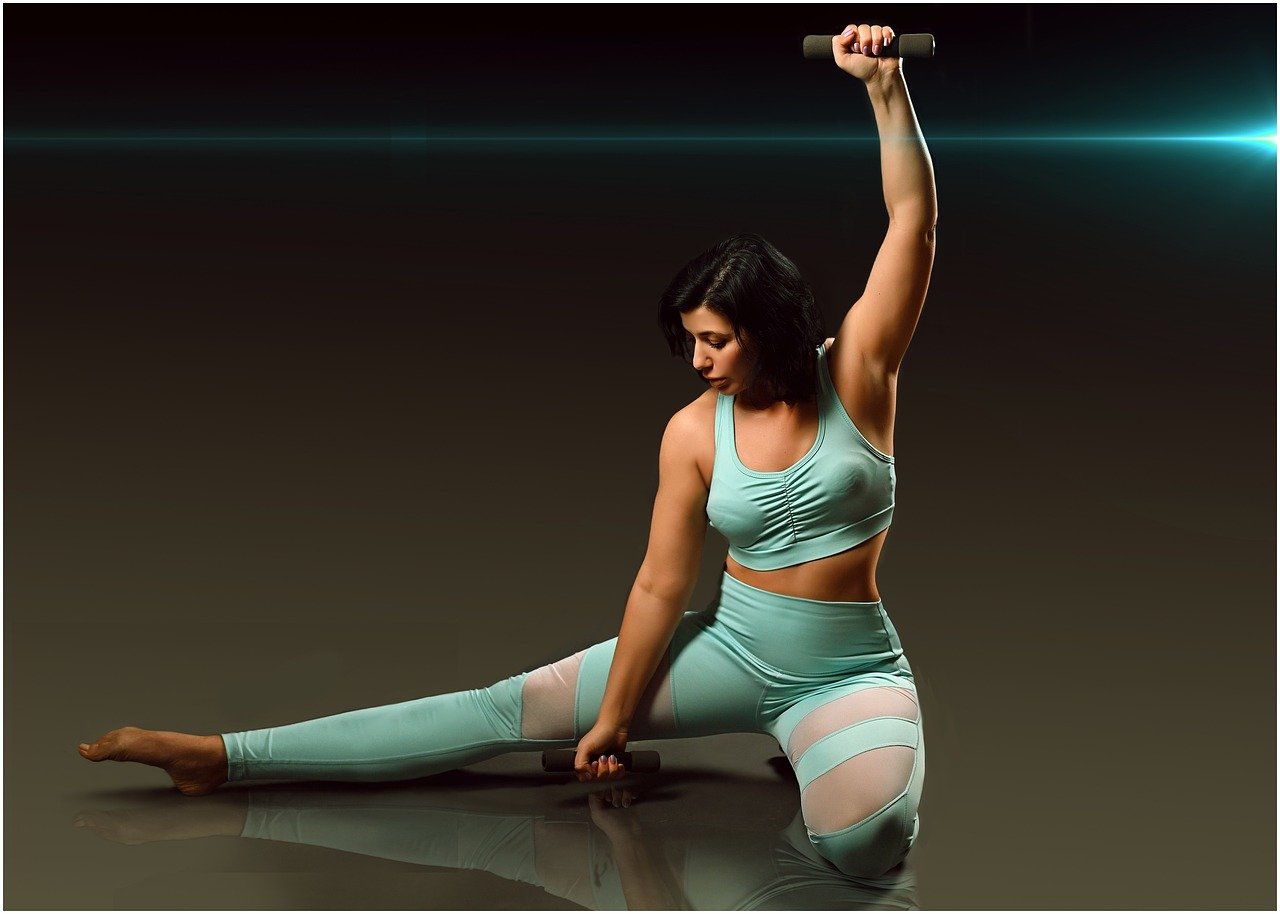
Training Regimens
When it comes to enhancing both dance and self-defense skills, the right training regimen can make all the difference. Imagine combining the elegance of a dancer's movements with the precision of a self-defense technique. This fusion not only boosts physical capabilities but also enriches the mind-body connection, creating a holistic approach to personal safety and fitness. So, how do we go about designing an effective training regimen that incorporates elements from both dance and self-defense? Let's dive into this exciting intersection.
To start, a well-rounded training program should include a variety of components that target different aspects of both disciplines. Here’s a breakdown of what such a regimen might look like:
| Component | Description | Frequency |
|---|---|---|
| Warm-Up | Dynamic stretching and mobility exercises to prepare the body. | Daily |
| Dance Techniques | Focus on specific dance styles to develop rhythm and fluidity. | 3 times a week |
| Self-Defense Drills | Practice basic self-defense moves and scenarios for practical application. | 2 times a week |
| Footwork Training | Drills to enhance agility and positioning, crucial for both dance and self-defense. | 3 times a week |
| Cool Down | Stretching and relaxation techniques to aid recovery. | Daily |
Incorporating these components into a training regimen can provide a comprehensive approach to skill development. However, it’s essential to tailor the regimen to individual needs and goals. For instance, if you're more inclined toward dance, you might want to emphasize the dance techniques while still dedicating time to self-defense drills. On the other hand, if personal safety is your primary concern, integrating more self-defense scenarios into your practice can be beneficial.
Moreover, consider the importance of cross-training. Engaging in activities like yoga or martial arts can complement your dance and self-defense practice. Yoga enhances flexibility and body awareness, while martial arts can improve strength and discipline. This cross-disciplinary training not only keeps things fresh and exciting but also builds a diverse skill set that enhances overall performance.
Lastly, remember that consistency is key. Whether you’re dancing your heart out or practicing self-defense maneuvers, regular practice will lead to improvement. Set realistic goals and track your progress, celebrating small victories along the way. As you blend the worlds of dance and self-defense, you’ll find that not only does your physical fitness improve, but your confidence and ability to respond to various situations also heighten. So, lace up those dance shoes and get ready to kick some serious butt!
- Can dance really improve my self-defense skills? Absolutely! The movements in dance can enhance your agility, coordination, and body awareness, all of which are crucial in self-defense.
- How often should I train in both disciplines? Aim for a balanced approach, dedicating time each week to both dance and self-defense to reap the benefits of both.
- What type of dance is best for self-defense? While any dance style can be beneficial, styles that emphasize footwork and body control, like ballet or hip-hop, can be particularly useful.
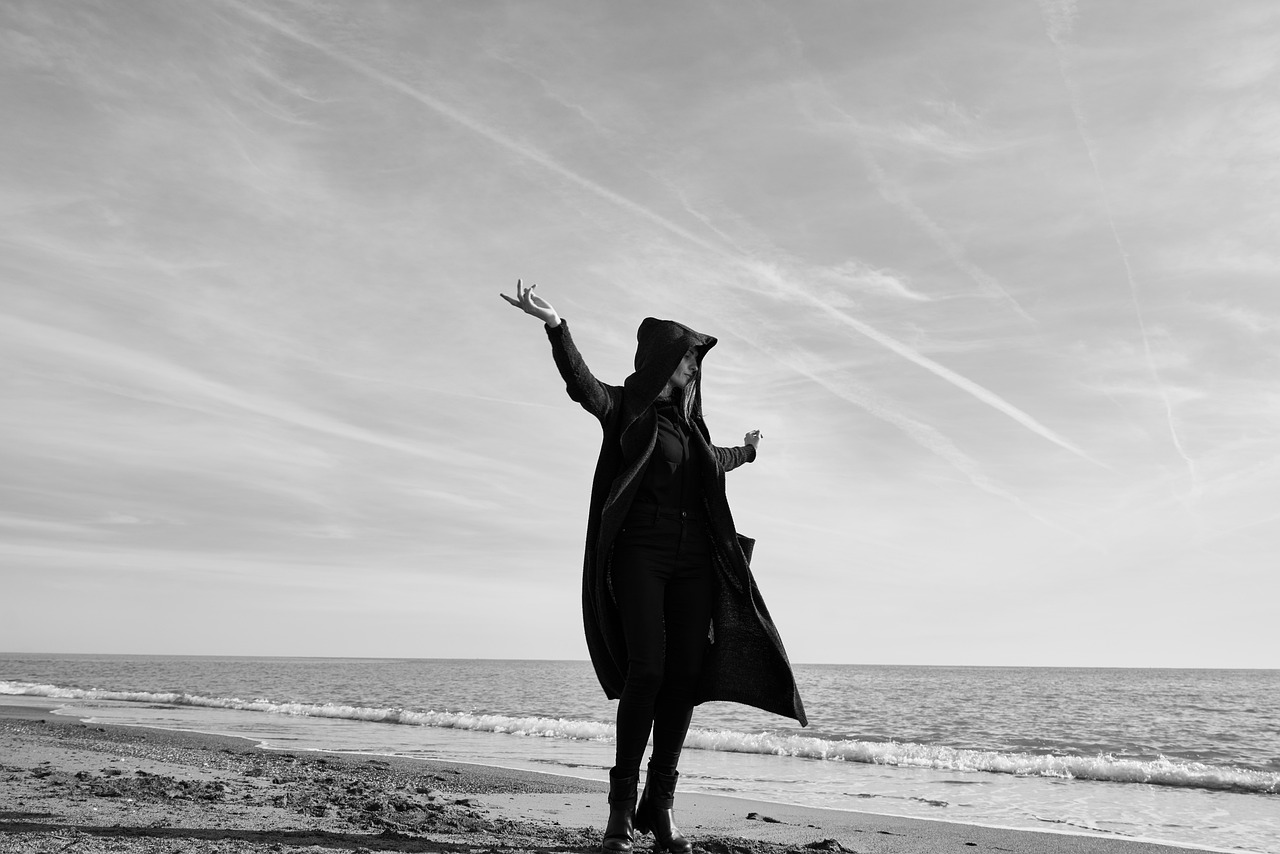
Community and Support
When it comes to mastering the art of dance and self-defense, the journey can often feel overwhelming. However, one of the most enriching aspects of both disciplines is the sense of community and support that accompanies them. Imagine stepping into a space where everyone shares your passion, where you can learn from each other, and where encouragement flows as freely as the music. This is the essence of joining a community focused on dance and self-defense.
Being part of a supportive group not only enhances your skills but also builds your confidence. Think of it as having a safety net; when you stumble, there are others to catch you, cheer you on, and help you get back on your feet. In dance classes, whether you're learning the latest moves or perfecting your technique, having peers who are equally invested in improvement creates a dynamic environment that fosters growth. Similarly, in self-defense training, the camaraderie among members can be a powerful motivator, pushing you to face challenges head-on while knowing you’re not alone.
Moreover, these communities often provide opportunities for collaboration, workshops, and events that can deepen your understanding of both fields. For instance, you might find a local studio that offers workshops blending dance with self-defense techniques, allowing you to explore the intersection of these two worlds in a supportive setting. This kind of engagement not only sharpens your skills but also opens up avenues for friendships and networks that extend beyond the studio walls.
In addition to skill development, being part of a community can significantly enhance your emotional well-being. The shared experiences and mutual encouragement create a sense of belonging, which is vital for personal growth. Whether you’re celebrating milestones or navigating challenges, having a group of like-minded individuals can make all the difference. You might find yourself forming bonds that last a lifetime, all while working towards a common goal of personal safety and artistic expression.
To further illustrate the impact of community support, consider the following table that outlines the benefits of joining a dance and self-defense group:
| Benefit | Description |
|---|---|
| Skill Development | Access to diverse techniques and feedback from experienced practitioners. |
| Emotional Support | Encouragement and motivation from peers during training. |
| Networking Opportunities | Building connections with others who share similar interests. |
| Collaborative Learning | Participating in workshops and events that integrate both disciplines. |
In conclusion, the journey through dance and self-defense is not just about mastering techniques; it's also about the connections you forge along the way. Embrace the community, share your experiences, and support one another. After all, the strength of a dancer and a self-defense practitioner lies not only in their skills but in the relationships they build and the support they offer each other.
- How can I find a local dance and self-defense community?
Start by searching online for local studios or community centers that offer classes in both disciplines. Social media groups can also be a great resource to connect with like-minded individuals.
- What are the benefits of combining dance and self-defense?
Combining these two practices enhances physical fitness, improves coordination and balance, and boosts confidence in both artistic expression and personal safety.
- Can I participate in both dance and self-defense if I’m a beginner?
Absolutely! Many communities welcome beginners and provide a supportive environment to learn and grow at your own pace.
Frequently Asked Questions
- How can dance movements enhance my self-defense skills?
Dance movements can improve your agility, coordination, and body awareness, which are crucial for effective self-defense. By practicing dance, you develop a better understanding of your body mechanics, allowing you to execute self-defense techniques more gracefully and efficiently.
- Do I need to be a dancer to benefit from combining dance and self-defense?
No, you don’t need to be a professional dancer! Anyone can benefit from the principles of movement, rhythm, and timing found in dance. These elements can enhance your self-defense capabilities, regardless of your dance background.
- What are some specific dance techniques that can be applied to self-defense?
Techniques like footwork patterns, body positioning, and fluid movements can be adapted from dance to improve your self-defense skills. For example, the quick lateral movements in dance can help you evade an attack, while maintaining balance and poise.
- How does emotional expression play a role in self-defense?
Emotional awareness can empower you in high-stress situations. Dance teaches you to connect with your emotions, which can help you stay calm and focused during a confrontation, ultimately improving your decision-making and response time.
- What kind of training regimens combine dance and self-defense?
Training regimens that incorporate both dance and self-defense may include classes that blend techniques from both disciplines, such as capoeira or martial arts that emphasize movement and rhythm. These programs can enhance your overall physical fitness while developing self-defense skills.
- Is there a community for those interested in both dance and self-defense?
Absolutely! Many local studios and online forums offer communities where individuals can share experiences, training tips, and support. Joining such groups can significantly enhance your skills and confidence in both dance and self-defense.
- Can I practice self-defense without formal training?
While formal training is beneficial, practicing the principles of movement, balance, and awareness can be done independently. Engaging in dance or following online tutorials can help you develop these skills in a safe and enjoyable way.

